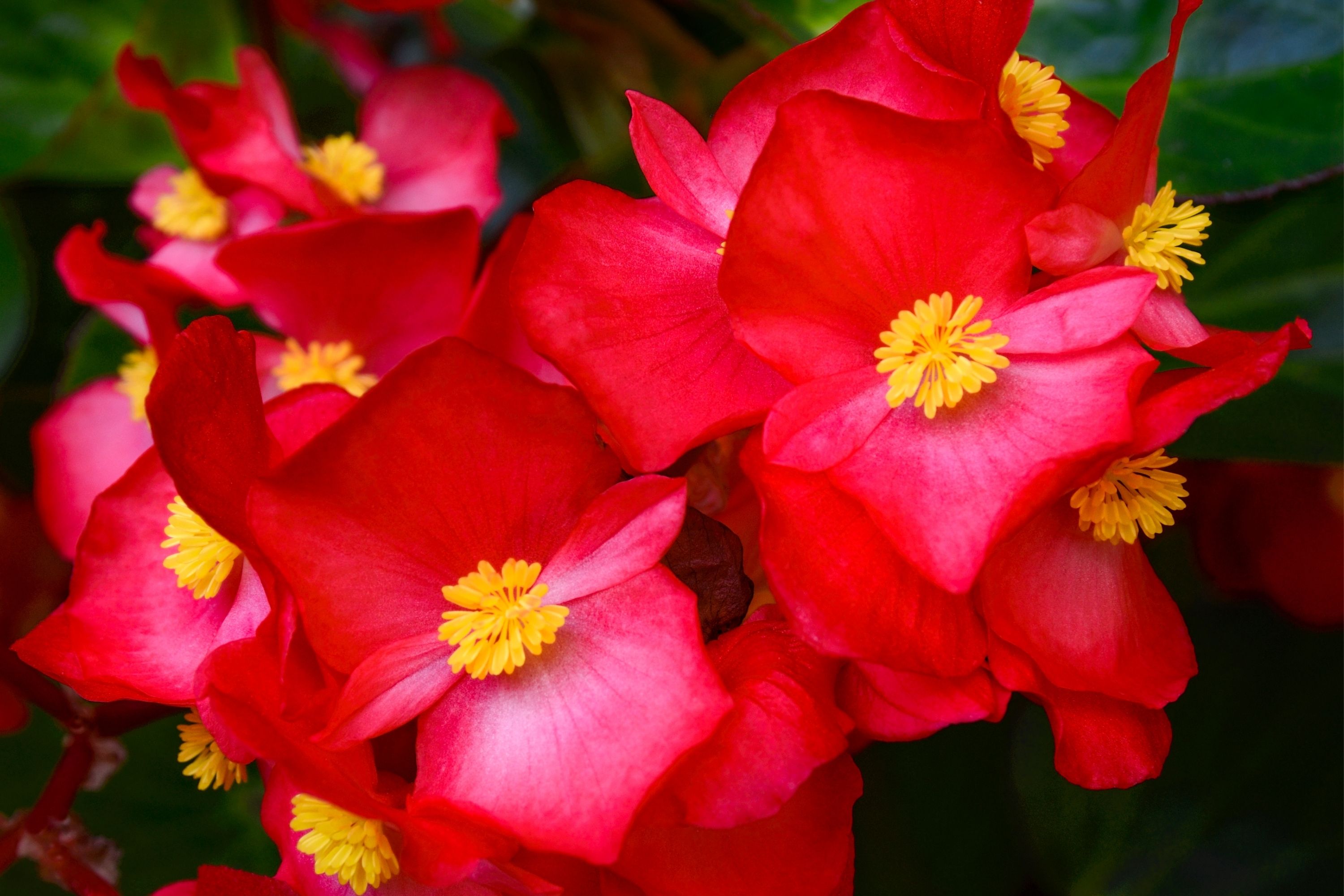Wax begonia
(Begonia cucullata)

Description
Begonia cucullata is a popular species of the Begonia genus, commonly known as the Wax Begonia, a native to South America. The plant is grown for its attractive foliage and bright flowers that bloom throughout the year, making it a popular choice for gardens, parks, and indoor decoration. In this article, we will explore the key features of Begonia cucullata, including its description, habitat, cultivation, and propagation. Description: Begonia cucullata is a herbaceous plant that grows up to 30 cm in height, with green to bronze leaves that are waxy and succulent, with a shiny surface. The leaves are asymmetrical, heart-shaped, and have a slightly serrated edge. The plant produces small flowers that are typically pink, white, or red in color and bloom in clusters. The flowers are small and delicate, with five petals that form a cup-shaped structure. The flowers bloom throughout the year, making the plant a popular choice for gardeners who want continuous color in their gardens. Habitat: Begonia cucullata is native to the South American continent, specifically to Brazil, Peru, and Ecuador. The plant prefers a tropical climate with warm temperatures, high humidity, and moderate rainfall. The plant is usually found in shady, moist areas such as forests, riverbanks, and rocky terrain. In its natural habitat, the plant grows as an epiphyte, which means it grows on the surface of other plants, such as trees, but does not take any nutrients from the host plant. Cultivation: Begonia cucullata is a popular plant in gardens and parks, and it can also be grown as a houseplant. The plant prefers well-draining soil that is rich in organic matter. The soil should be kept moist, but not waterlogged, and the plant should be watered regularly, especially during dry spells. The plant can be grown in full sun or partial shade, but it is important to protect it from direct sunlight, which can scorch the leaves. Propagation: Begonia cucullata can be propagated through stem cuttings or leaf cuttings. Stem cuttings are taken from the plant's stem, and leaf cuttings are taken from the plant's leaves. Both methods require a sterile cutting tool to prevent the spread of disease. Stem cuttings should be about 10 cm in length, and leaf cuttings should be taken with a small section of the stem attached. The cuttings should be planted in a well-draining potting mix and kept in a warm, humid location until they root. Conclusion: Begonia cucullata is a beautiful and versatile plant that can be grown in a variety of settings, including gardens, parks, and indoors. The plant's attractive foliage and bright flowers make it a popular choice for gardeners who want continuous color in their gardens. The plant prefers a tropical climate with warm temperatures, high humidity, and moderate rainfall, and it can be propagated through stem cuttings or leaf cuttings. With proper care and cultivation, Begonia cucullata can provide years of enjoyment and beauty.
Taxonomic tree:







